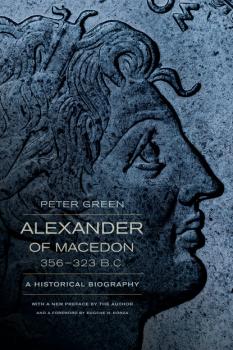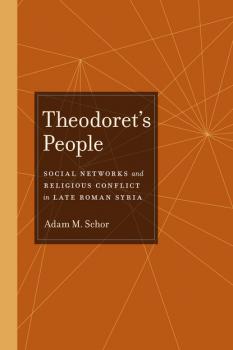ТОП просматриваемых книг сайта:
История
Различные книги в жанре История, доступные для чтения и скачиванияАннотация
In the wake of the conquests of Alexander the Great, the ancient world of the Bible—the ancient Near East—came under Greek rule, and in the land of Israel, time-old traditions and Greek culture met. But with the accession of King Antiochos IV, the soft power of culture was replaced with armed conflict, and soon the Jews rebelled against their imperial masters, as recorded in the Biblical books of the Maccabees. Whereas most scholars have dismissed the biblical accounts of religious persecution and cultural clash, Sylvie Honigman combines subtle literary analysis with deep historical insight to show how their testimony can be reconciled with modern historical analysis by conversing with the biblical authors, so to speak, in their own language to understand the way they described their experiences. Honigman contends that these stories are not mere fantasies but genuine attempts to cope with the massacre that followed the rebellion by giving it new meaning. This reading also discloses fresh political and economic factors.
Аннотация
What made the Romans laugh? Was ancient Rome a carnival, filled with practical jokes and hearty chuckles? Or was it a carefully regulated culture in which the uncontrollable excess of laughter was a force to fear—a world of wit, irony, and knowing smiles? How did Romans make sense of laughter? What role did it play in the world of the law courts, the imperial palace, or the spectacles of the arena?<br> <br> <i>Laughter in Ancient Rome</i> explores one of the most intriguing, but also trickiest, of historical subjects. Drawing on a wide range of Roman writing—from essays on rhetoric to a surviving Roman joke book—Mary Beard tracks down the giggles, smirks, and guffaws of the ancient Romans themselves. From ancient «monkey business» to the role of a chuckle in a culture of tyranny, she explores Roman humor from the hilarious, to the momentous, to the surprising. But she also reflects on even bigger historical questions. What kind of history of laughter can we possibly tell? Can we ever really «get» the Romans’ jokes?
Аннотация
Although it would appear in studies of late antique ecclesiastical authority and power that scholars have covered everything, an important aspect of the urban bishop has long been neglected: his role as demonologist and exorcist. When the emperor Constantine made Christianity the official religion of the realm, bishops and priests everywhere struggled to «Christianize» the urban spaces still dominated by Greco-Roman monuments and festivals. During this period of upheaval, when congregants seemingly attended everything but their own «orthodox» church, many ecclesiastical leaders began simultaneously to promote aggressive and insidious depictions of the demonic. In <I>City of Demons,</I> Dayna S. Kalleres investigates this developing discourse and the church-sponsored rituals that went along with it, showing how shifting ecclesiastical demonologies and evolving practices of exorcism profoundly shaped Christian life in the fourth century.
Аннотация
The figure of the dog is a paradox. As in so many cultures, past and present, the dog in ancient Greece was seen as the animal closest to humans, even as it elicited from them the most negative representations. Still a loaded term today, the word <I>bitch</I> not only signified shamelessness and a lack of self-control but was also exclusively figured as female. Woman and dogs in the Greek imagination were intimately intertwined, and in this careful, engaging analysis, Cristiana Franco explores the ancients' complex relationship with both. By analyzing the relationship between humans and dogs as depicted in a vast array of myths, proverbs, spontaneous metaphors, and comic jokes, Franco in particular shows how the symbolic overlap between dog and woman provided the conceptual tools to maintain feminine subordination.<BR /><BR /> Intended for general readers as well as scholars, <I>Shameless</I> extends the boundaries of classics and anthropology, forming a model of the sensitive work that can be done to illuminate how deeply animals are imbricated in human history. The English translation has been revised and expanded from the original Italian edition, and it includes a new methodological appendix by the author that points the way toward future work in the emerging field of human-animal studies.
Аннотация
Until recently, popular biographers and most scholars viewed Alexander the Great as a genius with a plan, a romantic figure pursuing his vision of a united world. His dream was at times characterized as a benevolent interest in the brotherhood of man, sometimes as a brute interest in the exercise of power. Green, a Cambridge-trained classicist who is also a novelist, portrays Alexander as both a complex personality and a single-minded general, a man capable of such diverse expediencies as patricide or the massacre of civilians. Green describes his Alexander as «not only the most brilliant (and ambitious) field commander in history, but also supremely indifferent to all those administrative excellences and idealistic yearnings foisted upon him by later generations, especially those who found the conqueror, tout court, a little hard upon their liberal sensibilities.»<br /><br />This biography begins not with one of the universally known incidents of Alexander's life, but with an account of his father, Philip of Macedonia, whose many-territoried empire was the first on the continent of Europe to have an effectively centralized government and military. What Philip and Macedonia had to offer, Alexander made his own, but Philip and Macedonia also made Alexander form an important context for understanding Alexander himself. Yet his origins and training do not fully explain the man. After he was named hegemon of the Hellenic League, many philosophers came to congratulate Alexander, but one was conspicuous by his absence: Diogenes the Cynic, an ascetic who lived in a clay tub. Piqued and curious, Alexander himself visited the philosopher, who, when asked if there was anything Alexander could do for him, made the famous reply, «Don't stand between me and the sun.» Alexander's courtiers jeered, but Alexander silenced them: «If I were not Alexander, I would be Diogenes.» This remark was as unexpected in Alexander as it would be in a modern leader.<br /><br />For the general reader, the book, redolent with gritty details and fully aware of Alexander's darker side, offers a gripping tale of Alexander's career. Full backnotes, fourteen maps, and chronological and genealogical tables serve readers with more specialized interests.
Аннотация
From the informal games of Homer's time to the highly organized contests of the Roman world, Miller has compiled a trove of ancient sources: Plutarch on boxing, Aristotle on the pentathlon, Philostratos on the buying and selling of victories, Vitruvius on literary competitions, and Xenophon on female body building. <i>Arete </i>offers readers an absorbing lesson in the culture of Greek athletics from the greatest of teachers, the ancients themselves, and demonstrates that the concepts of virtue, skill, pride, valor, and nobility embedded in the word arete are only part of the story from antiquity. This bestselling volume on the culture of Greek athletics is updated with a new preface by leading scholar Paul Christesen that discusses the book's continued importance for students of ancient athletics.
Аннотация
The infamous emperor Caligula ruled Rome from A.D. 37 to 41 as a tyrant who ultimately became a monster. An exceptionally smart and cruelly witty man, Caligula made his contemporaries worship him as a god. He drank pearls dissolved in vinegar and ate food covered in gold leaf. He forced men and women of high rank to have sex with him, turned part of his palace into a brothel, and committed incest with his sisters. He wanted to make his horse a consul. Torture and executions were the order of the day. Both modern and ancient interpretations have concluded from this alleged evidence that Caligula was insane. But was he? <br /><br />This biography tells a different story of the well-known emperor. In a deft account written for a general audience, Aloys Winterling opens a new perspective on the man and his times. Basing Caligula on a thorough new assessment of the ancient sources, he sets the emperor's story into the context of the political system and the changing relations between the senate and the emperor during Caligula's time and finds a new rationality explaining his notorious brutality.
Аннотация
The great Gothic cathedrals of Europe are among the most astonishing achievements of Western culture. Evoking feelings of awe and humility, they make us want to understand what inspired the people who had the audacity to build them. This engrossing book surveys an era that has fired the historical imagination for centuries. In it Robert A. Scott explores why medieval people built Gothic cathedrals, how they built them, what conception of the divine lay behind their creation, and how religious and secular leaders used cathedrals for social and political purposes. As a traveler’s companion or a rich source of knowledge for the armchair enthusiast, <i>The Gothic Enterprise</i> helps us understand how ordinary people managed such tremendous feats of physical and creative energy at a time when technology was rudimentary, famine and disease were rampant, the climate was often harsh, and communal life was unstable and incessantly violent.<br /><br />While most books about Gothic cathedrals focus on a particular building or on the cathedrals of a specific region, <i>The Gothic Enterprise</i> considers the <i>idea</i> of the cathedral as a humanly created space. Scott discusses why an impoverished people would commit so many social and personal resources to building something so physically stupendous and what this says about their ideas of the sacred, especially the vital role they ascribed to the divine as a protector against the dangers of everyday life.<br /><br />Scott’s narrative offers a wealth of fascinating details concerning daily life during medieval times. The author describes the difficulties master-builders faced in scheduling construction that wouldn’t be completed during their own lifetimes, how they managed without adequate numeric systems or paper on which to make detailed drawings, and how climate, natural disasters, wars, variations in the hours of daylight throughout the year, and the celebration of holy days affected the pace and timing of work. Scott also explains such things as the role of relics, the quarrying and transporting of stone, and the incessant conflict cathedral-building projects caused within their communities. Finally, by drawing comparisons between Gothic cathedrals and other monumental building projects, such as Stonehenge, Scott expands our understanding of the human impulses that shape our landscape.
Аннотация
Theodoret’s People sheds new light on religious clashes of the mid-fifth century regarding the nature (or natures) of Christ. Adam M. Schor focuses on Theodoret, bishop of Cyrrhus, his Syrian allies, and his opponents, led by Alexandrian bishops Cyril and Dioscorus. Although both sets of clerics adhered to the Nicene creed, their contrasting theological statements led to hostilities, violence, and the permanent fracturing of the Christian community. Schor closely examines council transcripts, correspondence, and other records of communication. Using social network theory, he argues that Theodoret’s doctrinal coalition was actually a meaningful community, bound by symbolic words and traditions, riven with internal rivalries, and embedded in a wider world of elite friendship and patronage.
Аннотация
This fascinating cultural and intellectual history focuses on education as practiced by the imperial age Romans, looking at what they considered the value of education and its effect on children. W. Martin Bloomer details the processes, exercises, claims, and contexts of liberal education from the late first century b.c.e. to the third century c.e., the epoch of rhetorical education. He examines the adaptation of Greek institutions, methods, and texts by the Romans and traces the Romans’ own history of education. Bloomer argues that whereas Rome’s enduring educational legacy includes the seven liberal arts and a canon of school texts, its practice of competitive displays of reading, writing, and reciting were intended to instill in the young social as well as intellectual ideas.










